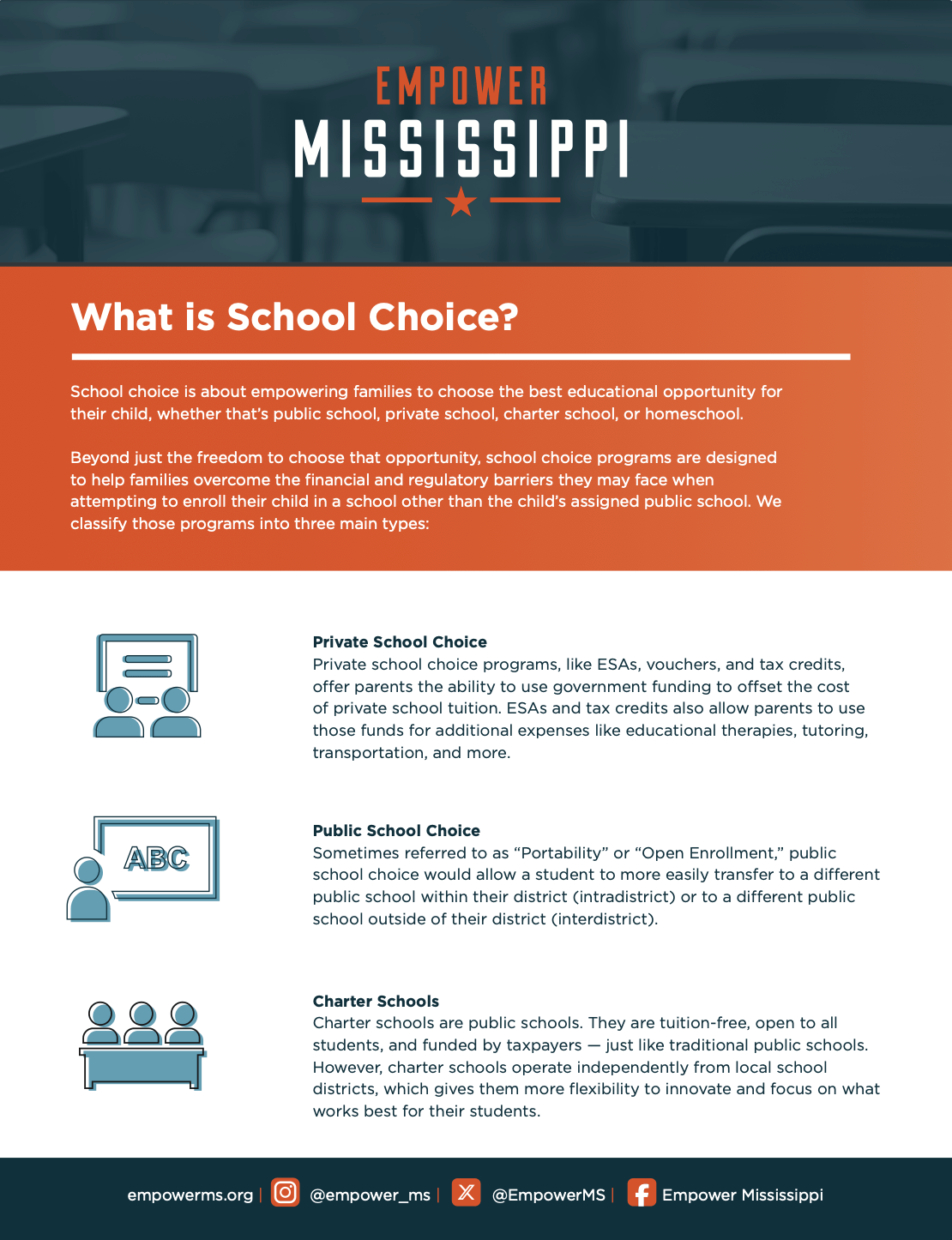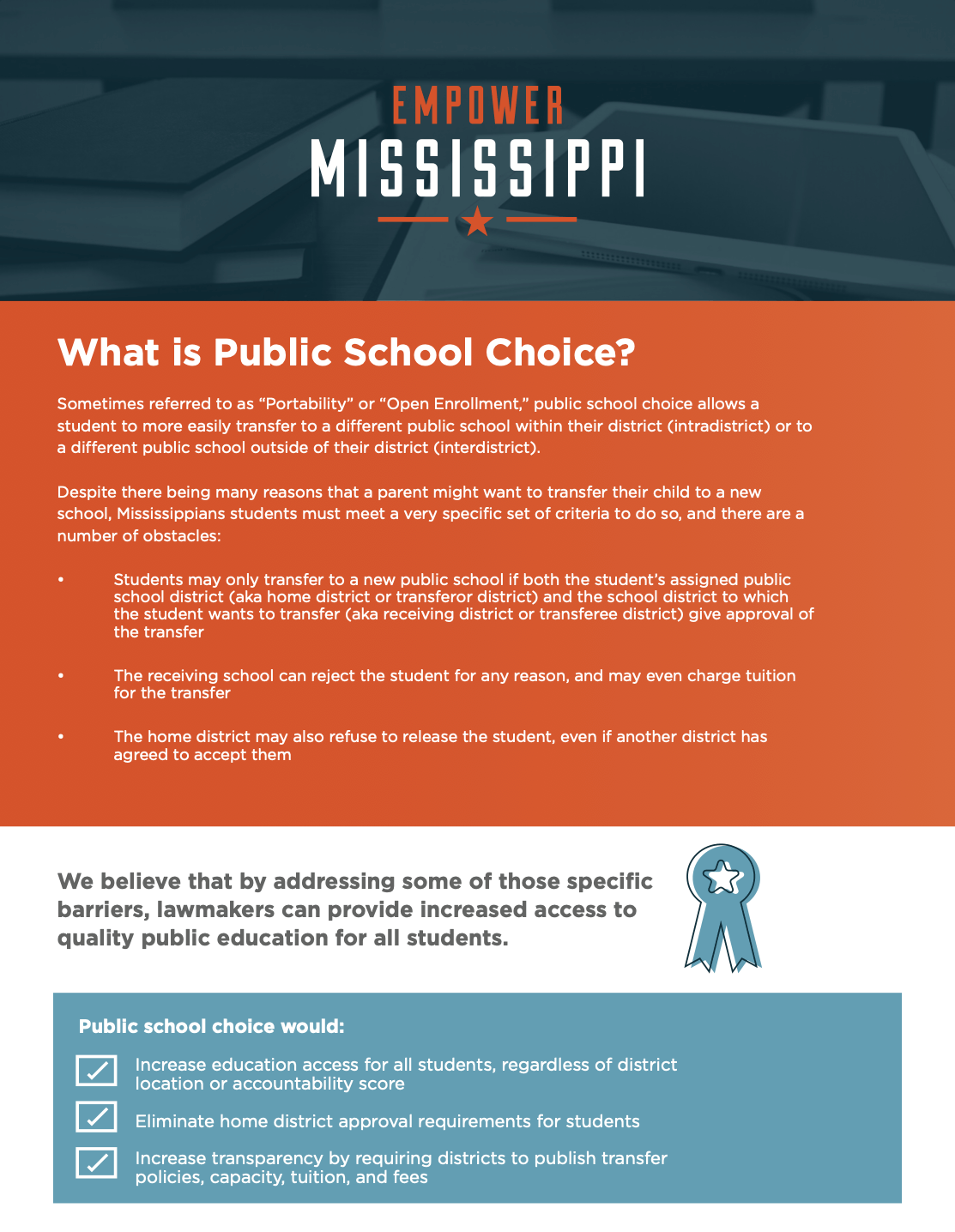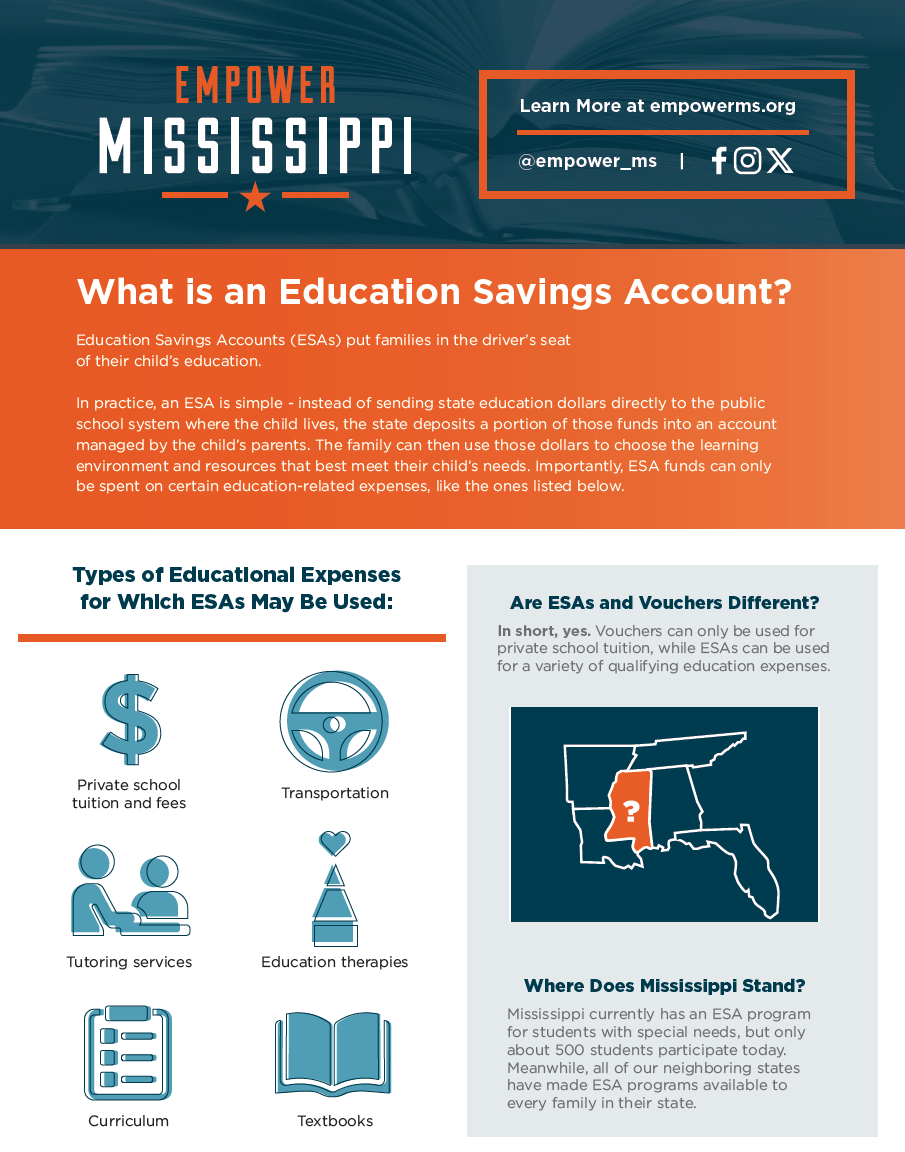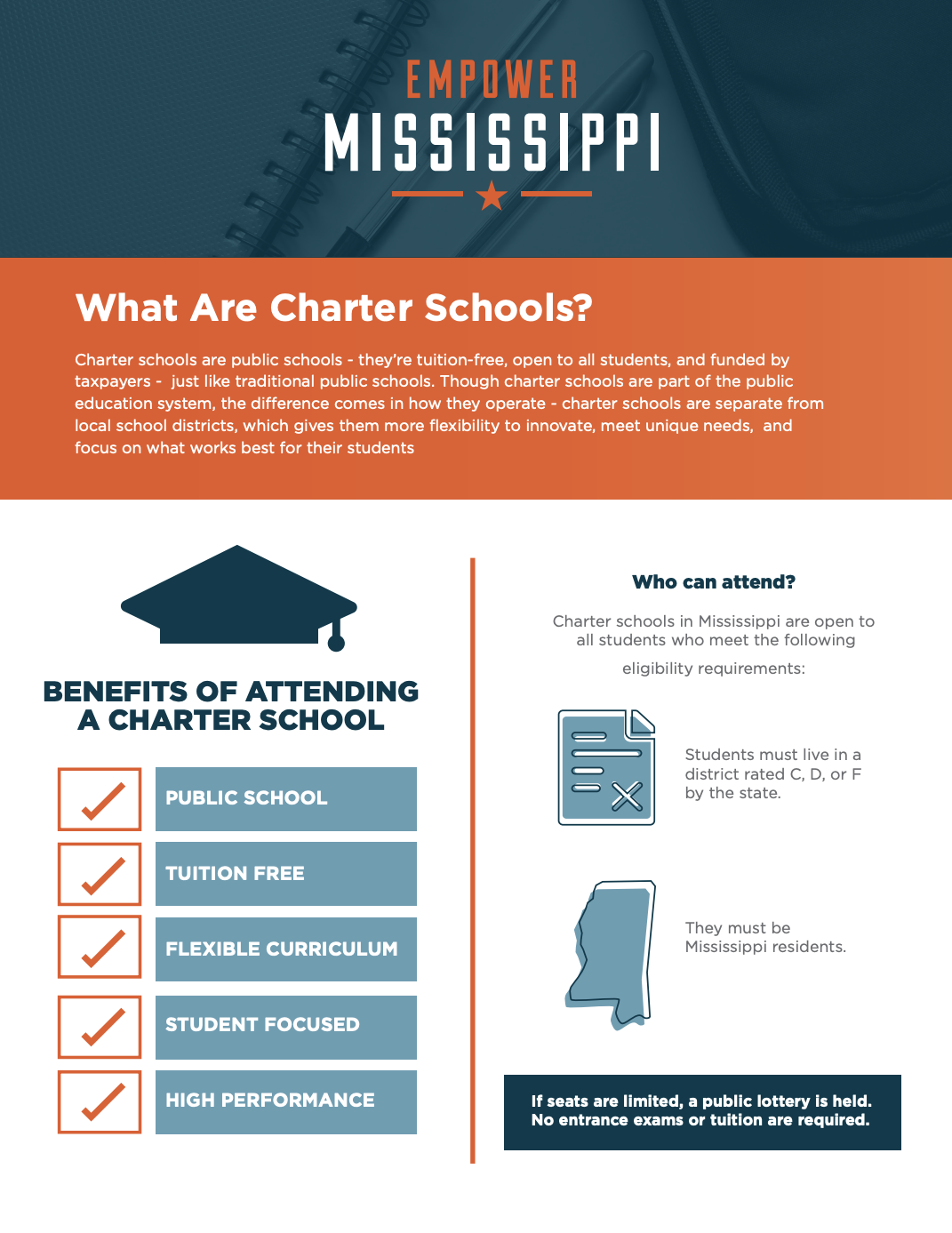What Is School Choice?
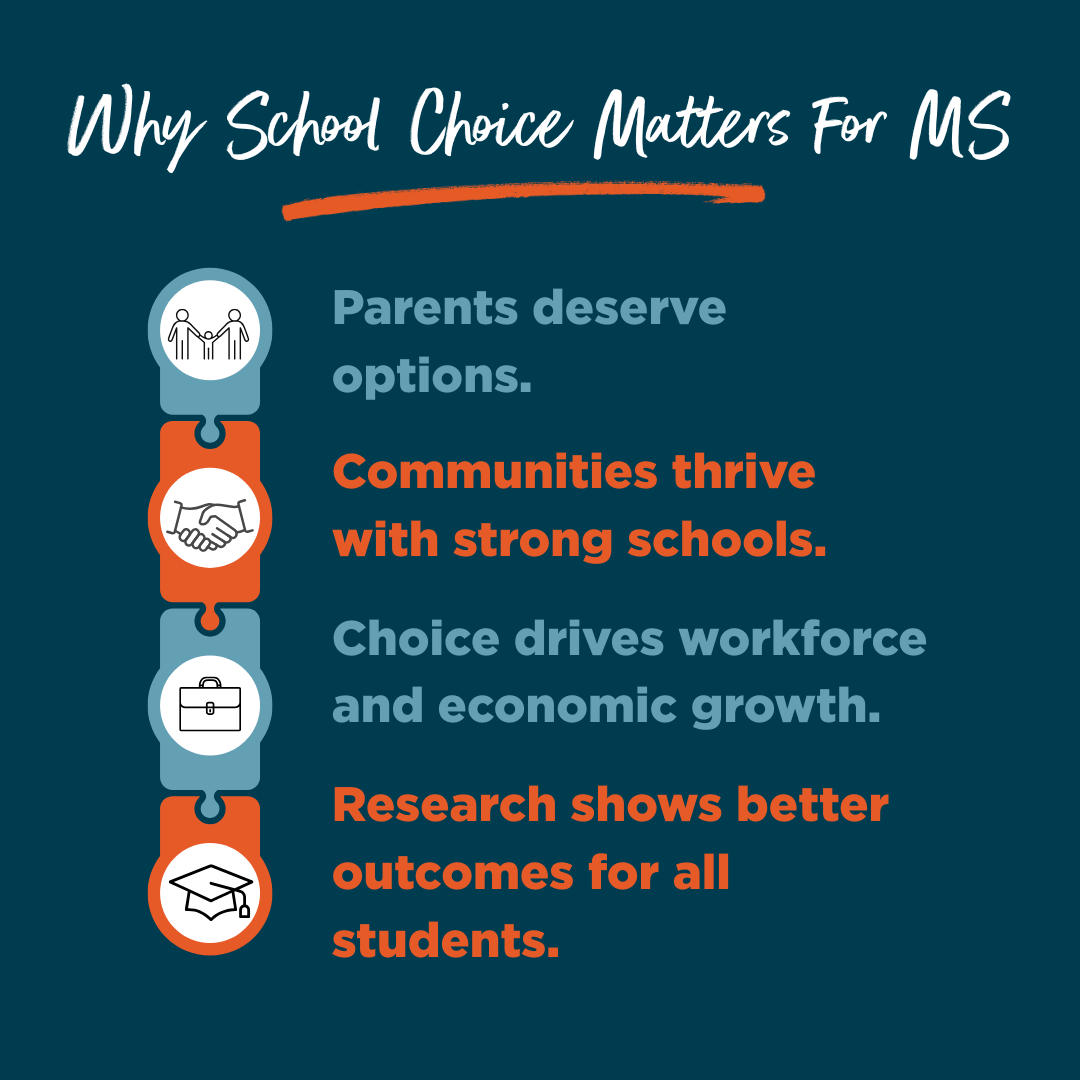
Types Of School Choice
Private Choice
Programs like ESAs, vouchers, and tax credits help families afford private school tuition and can also cover tutoring, therapies, and other learning needs.
Public Choice (Open Enrollment)
Lets students transfer within or outside their district, expanding access to quality public schools beyond their zip code.
Public Charter Schools
Tuition-free public schools, funded by taxpayers but independently run, are designed to innovate and focus on student success.
Overall MS Voter Support
Voter Support for School Choice in Mississippi
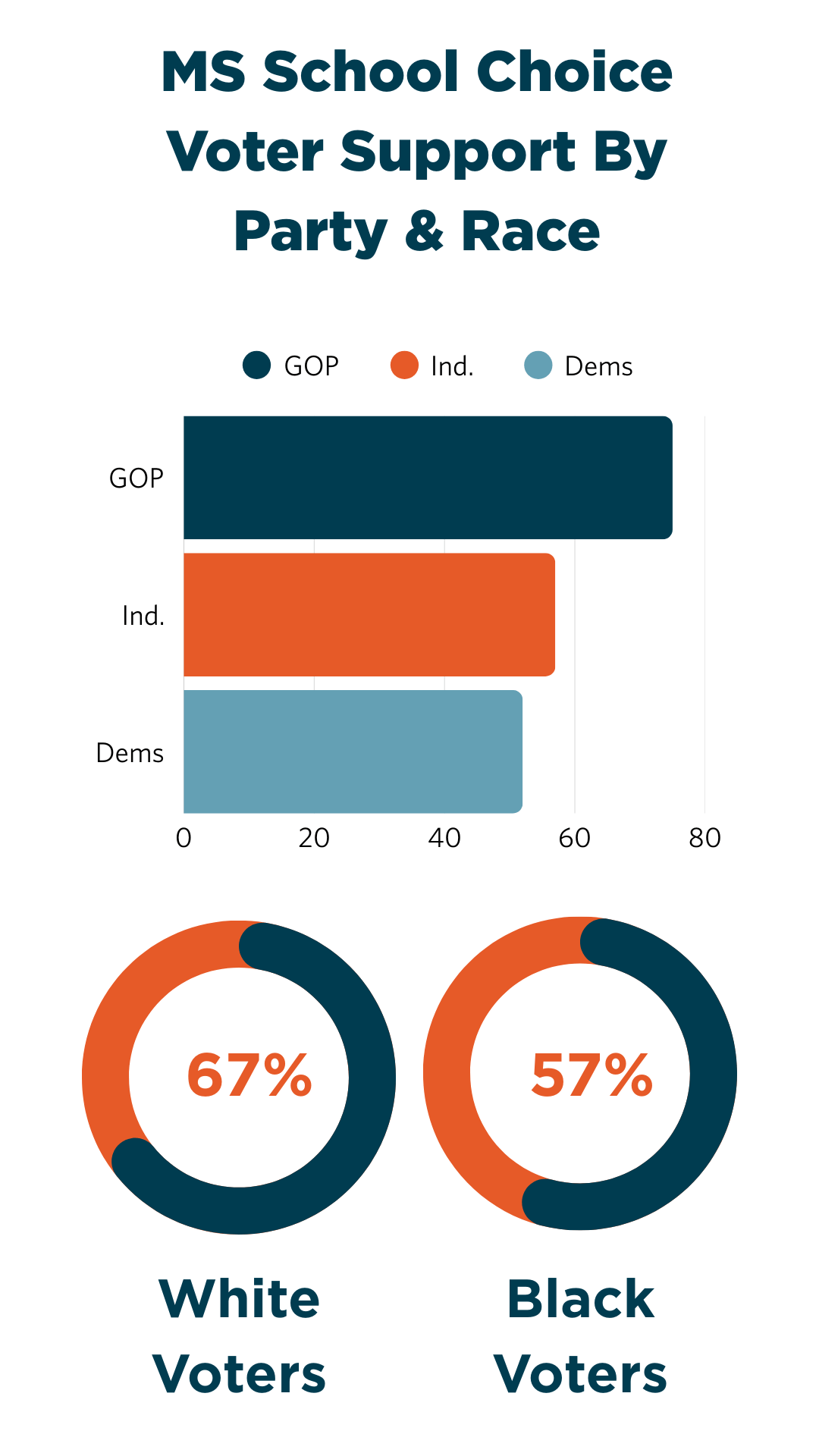
Competition from vouchers leads public schools to improve. Read Journal of Economic Literature Here
Private school choice benefits students who remain in public schools. Read Peabody Journal of Education Here
More education freedom is linked with higher NAEP scores and gains. Read Journal of School Choice Here
Nearly 30 peer-reviewed studies show private school choice raises test scores for students who stay in public schools.
Myth vs. Fact
Make it make sense
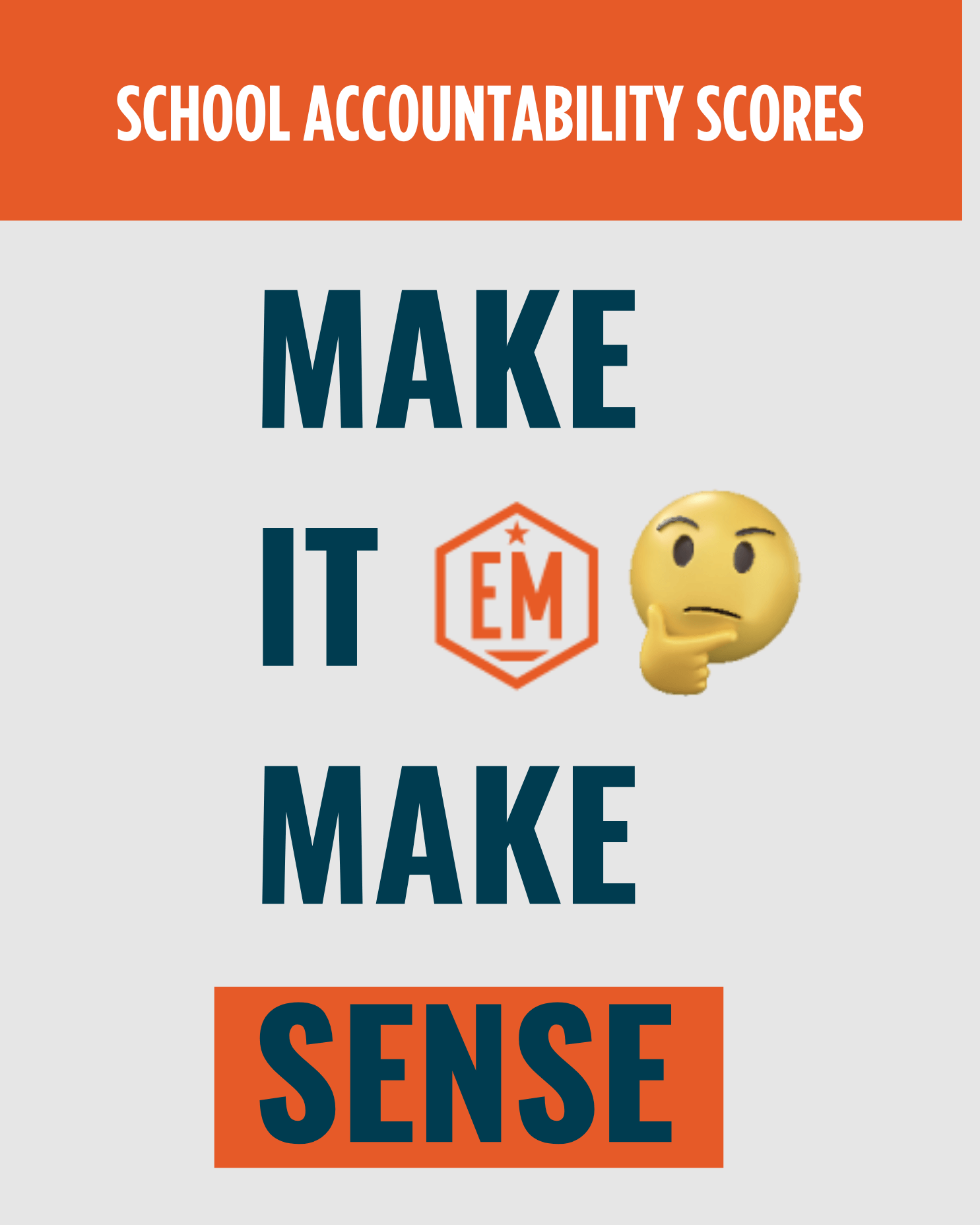
Take Action
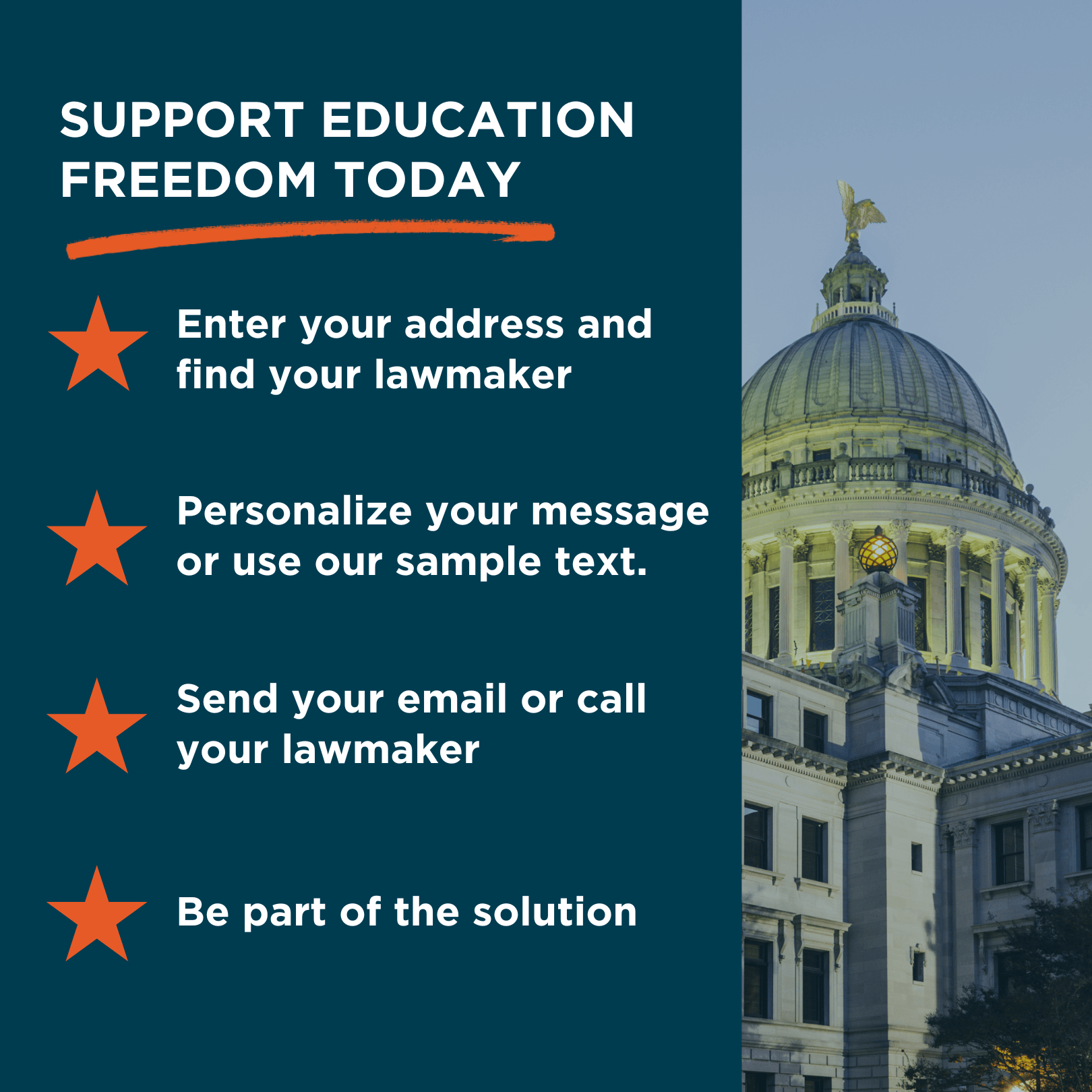
fact sheets
WHAT IS SCHOOL CHOICE?
WHAT IS PUBLIC SCHOOL CHOICE?
WHAT IS AN
ESA?
WHAT CURRENT MS OPTIONS?
WHAT ARE CHARTER SCHOOLS?
